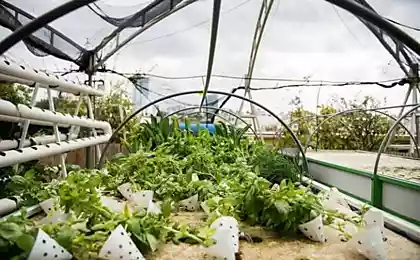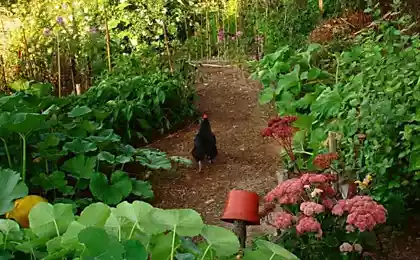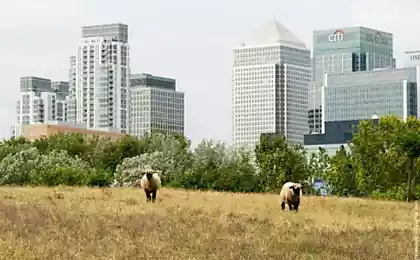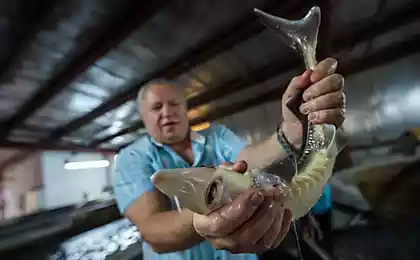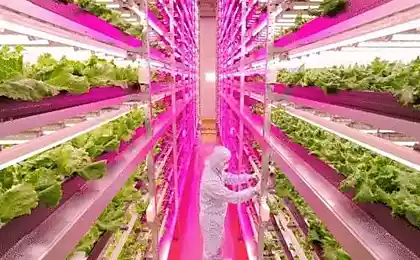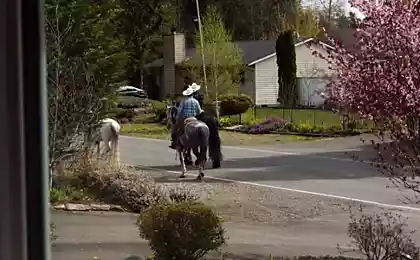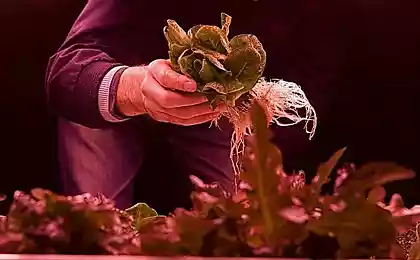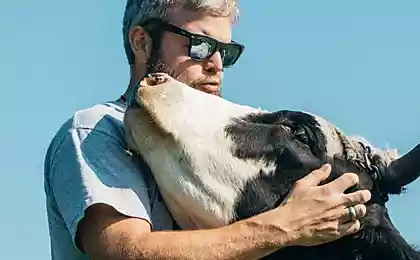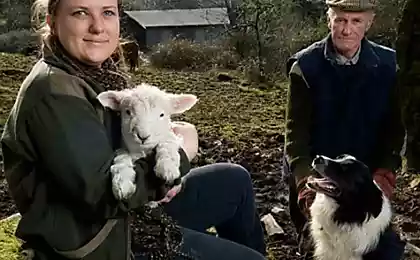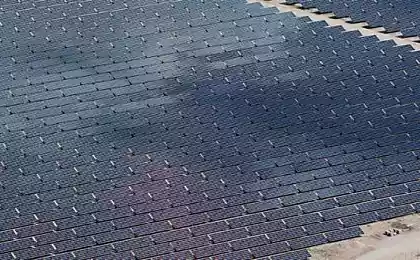1327
Tour the farm
Mankind eats a variety of "creeping" for several thousand years. One of those strange delicacies are oysters, which are considered among the most popular among the fishing groups of marine invertebrates. They are grown on special farms in various parts of the world. Today you can see the entire process of cultivation in the state of Maryland. Oyster farming industry is rapidly gaining momentum in Maryland. Bivalve diluted with 300 licenses issued in the territory in 1456 hectares in the Chesapeake Bay, both in the water and on the bottom of the bay. Photo: Timothy Devine, owner of the company «Barren Island Oysters», which started to breed oysters in June 2013.
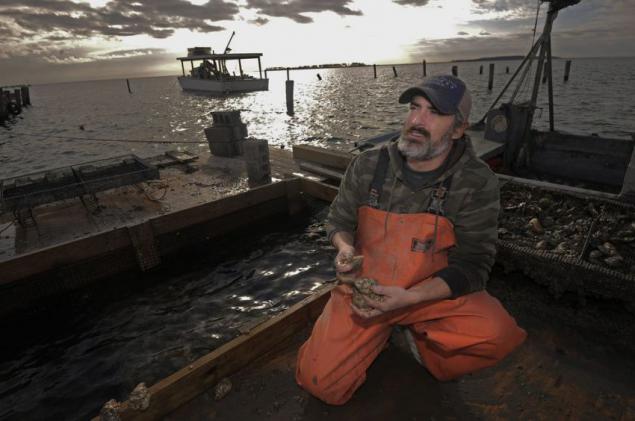
Selected oyster company Choptank Choptank washed in the river.
Oysters prefer sea water with low salt content, so just live in the intertidal zone near the mouth of the river.
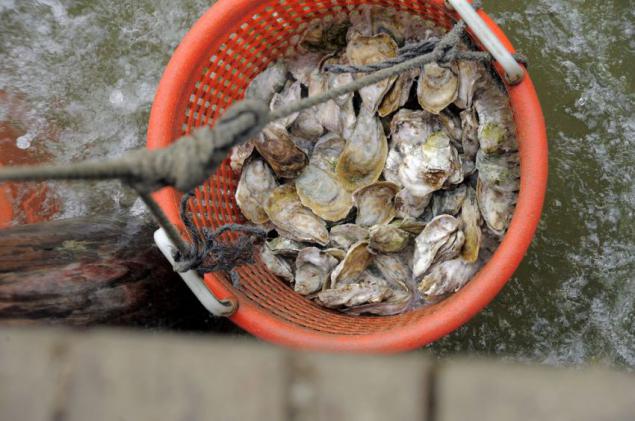
One of farmed oysters.
The first phase of oyster farming - the collection of juveniles (spat) to collectors, offered for the oyster banks in the period of their reproduction. Initially, as the collectors used bundles of twigs (fascines), but then began to be used as a curved trough plate tiles covered with a special composition, which is easy to scrape off the precipitated them juveniles. Nowadays plastic collectors are used with flexible plates of different shapes.
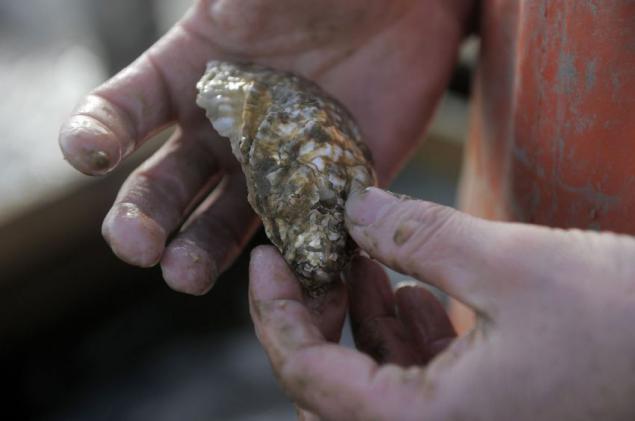
Kevin MakKlarren managing company sells farm-raised oysters since 2005.
Collectors from sleep left in place for several months, and then a little fingerlings transferred to a guard mesh frame, and today in bags of plastic or metal mesh, called "poshami" (from the French. Poche - pocket) that stand in the the bars at a height of 25-30 cm above the floor, or on a wooden "table". This measure protects the frame of the entry of silt and from predators, primarily on the starfish.
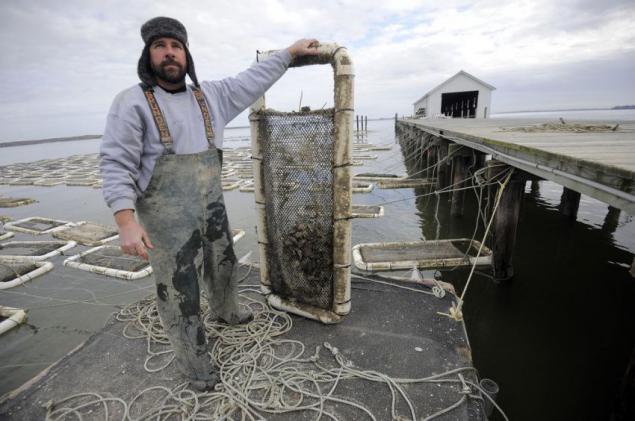
Oysters "grow" on a raft on the river Choptank. His first oyster company \ sold in 2005.
Some farms parks for breeding shell protects from volnoboya cemented shaft and divided into rows of basins; the inflow and outflow of water when the tide is regulated gateways.

Kevin MakKlarren cultivates oysters in an area of 1, 62 ha in the Choptank River via technology invented them.
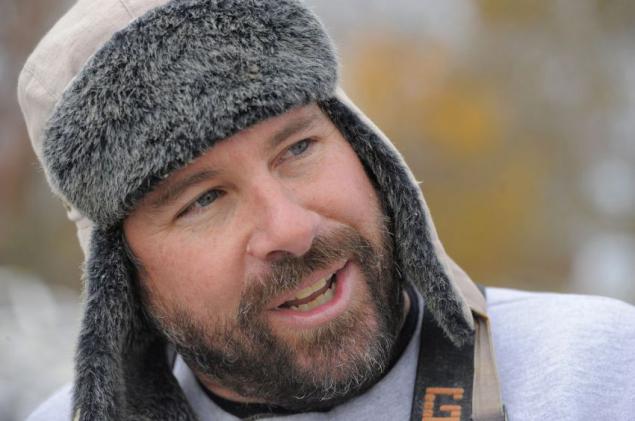
From left to right: Hector Meduena and Kevin Covey return the oysters in a cage before releasing it into the bay of Tar.
In such industrial parks oysters are grown for two years, after which they are transferred to nursery pools. Until the 1960s, 20c, these pools added some salt and the culture of Chlorella algae, which in the medium multiplies rapidly and serves as food for the oysters.
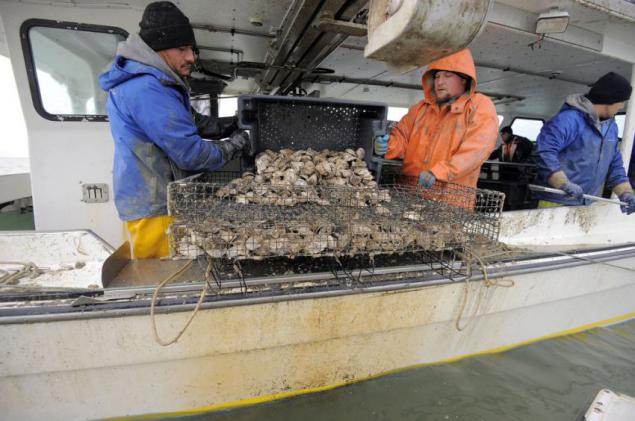
Timothy Devine pulls out one of his oysters from the tank.
Since not all caught in the intestinal tract to digest shellfish in nursery pools maintain the optimum (not excessive) cell concentration of chlorella. Nowadays supplements to the natural environment are unacceptable.
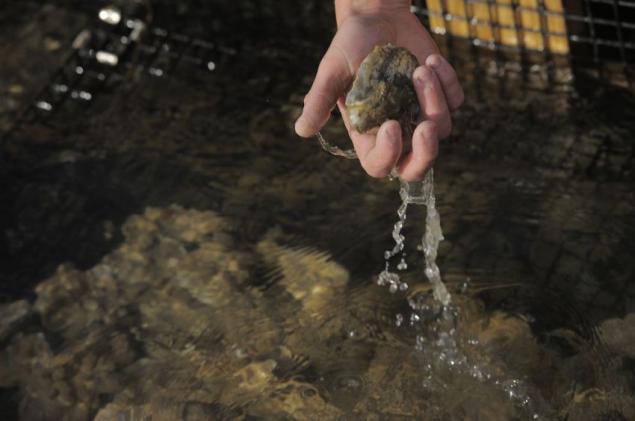
Oysters in the grid of the raft in which they grow.
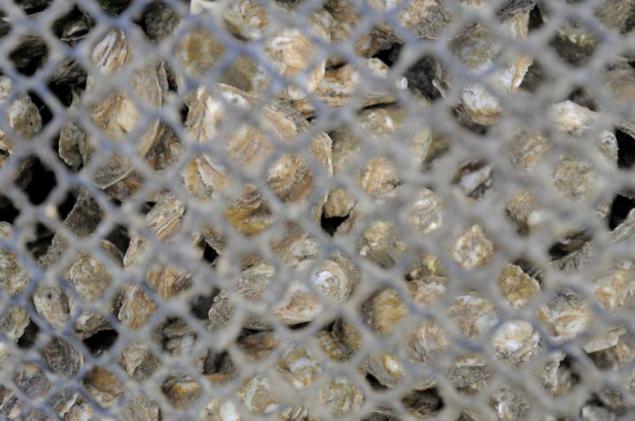
Hector Meduena and Kevin Covey take out the cage with oysters from the Bay of Tar.
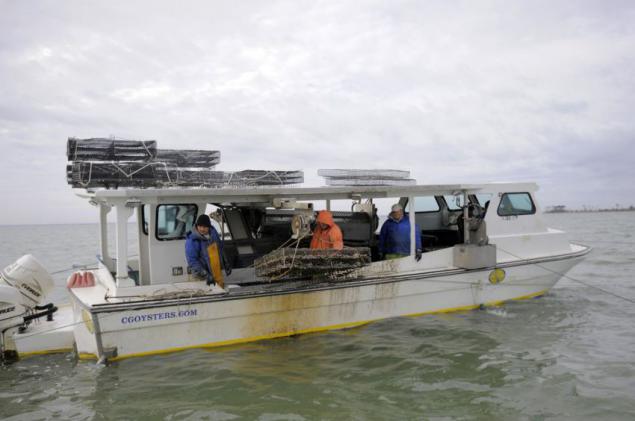
Regan Gifford with buckets of oysters on the pier.

Hector Meduena and Kevin Covey return cell in Tar Bay.
People living on the shores of warm seas, was mined and used to eat oysters from time immemorial. They began to artificially grow them in the period of the Roman Empire. Even the ancient Greeks and the Celts were grown oysters at home.
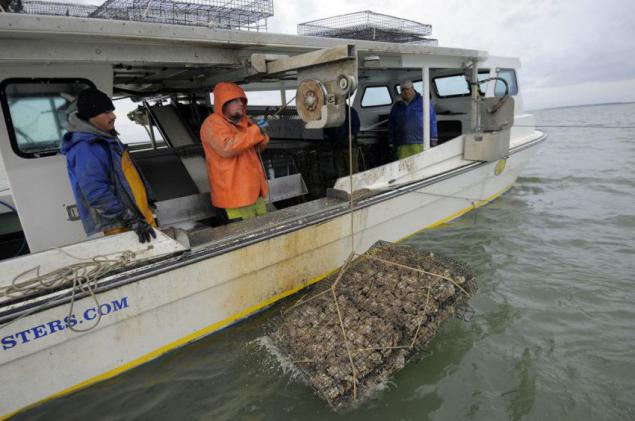
Manuel Garcia understands floating raft. After the end stage of growth here in the Gulf oysters sent Tar for further development.
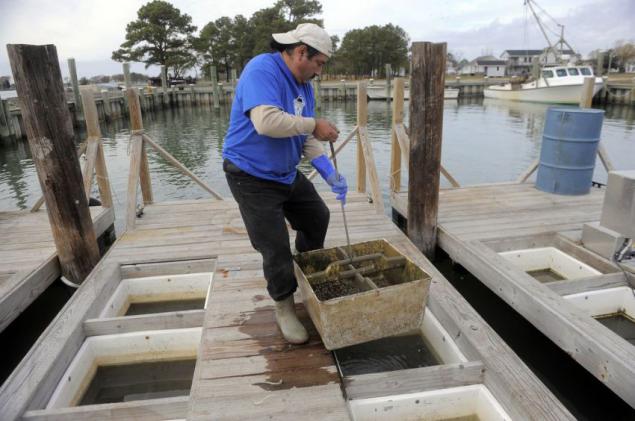
Johnny Shockley, co-owner of Chesapeake Gold Oysters, manages the boat. His company oysters bred for commercial sale in the market.
A rule that you should eat oysters only in months with the name "P", about the same date, when widespread artificial oyster farming. Now months, when oysters produce spawn can be changed at the discretion of the manufacturer, and besides, there are not producing eggs oysters. Although, there is another explanation for this rule - oysters on the collapse really quickly deteriorate in the summer.
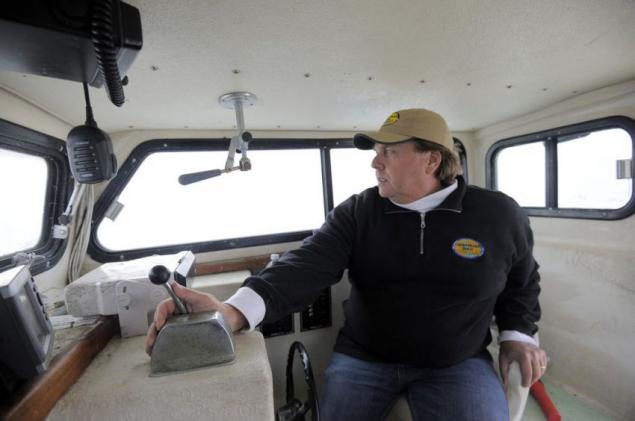
Manuel Garcia with a handful of young oysters.
Oysters that are, like most other animals, two sexes, can change it. This may happen several times during the life of the oysters under the influence of various factors. It's funny that usually oysters begin life "men" and good fattening and being ready for procreation, are "women." So even possible that the oyster fertilize their own eggs.
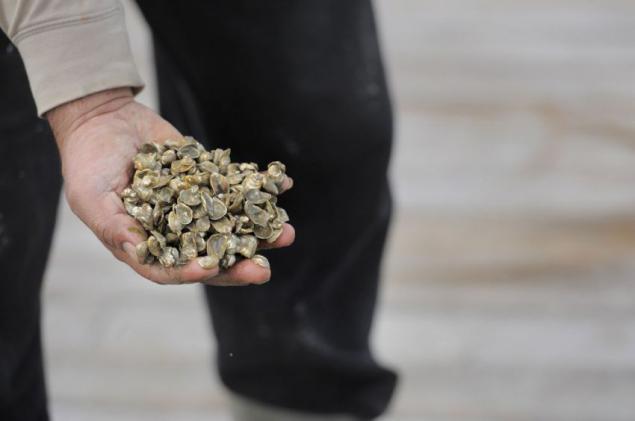
Manuel Garcia reveals an adult oyster.
Taste oysters can be as versatile as that of wine, it depends on the region, where she lived, and can be salty, sweet, mineral, or even like the taste of melon.
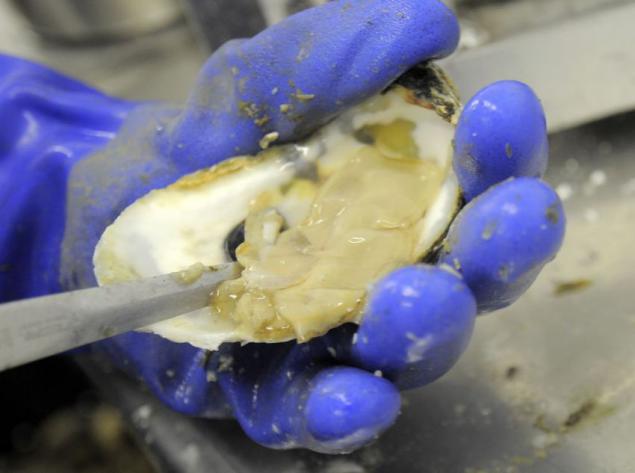
The ship company Chesapeake Gold Oysters in the work.
Recently, a team of American and Italian researchers scientifically proven that oysters contain rare amino acids that increase the content of sexual hormones. The oyster meat contains protein, fat, carbohydrate glycogen, minerals (iron, zinc, copper, calcium, iodine, phosphorus), niacin, vitamins B1, B2, B12 and PP. A total of 6 oysters - and the daily need for iron and copper provided!
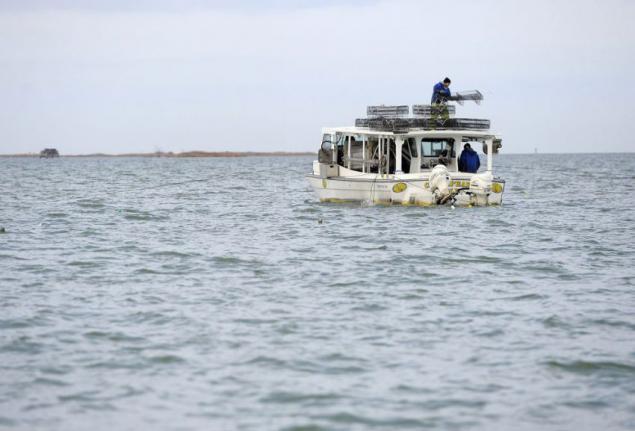
Source: bigpicture.ru

Selected oyster company Choptank Choptank washed in the river.
Oysters prefer sea water with low salt content, so just live in the intertidal zone near the mouth of the river.

One of farmed oysters.
The first phase of oyster farming - the collection of juveniles (spat) to collectors, offered for the oyster banks in the period of their reproduction. Initially, as the collectors used bundles of twigs (fascines), but then began to be used as a curved trough plate tiles covered with a special composition, which is easy to scrape off the precipitated them juveniles. Nowadays plastic collectors are used with flexible plates of different shapes.

Kevin MakKlarren managing company sells farm-raised oysters since 2005.
Collectors from sleep left in place for several months, and then a little fingerlings transferred to a guard mesh frame, and today in bags of plastic or metal mesh, called "poshami" (from the French. Poche - pocket) that stand in the the bars at a height of 25-30 cm above the floor, or on a wooden "table". This measure protects the frame of the entry of silt and from predators, primarily on the starfish.

Oysters "grow" on a raft on the river Choptank. His first oyster company \ sold in 2005.
Some farms parks for breeding shell protects from volnoboya cemented shaft and divided into rows of basins; the inflow and outflow of water when the tide is regulated gateways.

Kevin MakKlarren cultivates oysters in an area of 1, 62 ha in the Choptank River via technology invented them.

From left to right: Hector Meduena and Kevin Covey return the oysters in a cage before releasing it into the bay of Tar.
In such industrial parks oysters are grown for two years, after which they are transferred to nursery pools. Until the 1960s, 20c, these pools added some salt and the culture of Chlorella algae, which in the medium multiplies rapidly and serves as food for the oysters.

Timothy Devine pulls out one of his oysters from the tank.
Since not all caught in the intestinal tract to digest shellfish in nursery pools maintain the optimum (not excessive) cell concentration of chlorella. Nowadays supplements to the natural environment are unacceptable.

Oysters in the grid of the raft in which they grow.

Hector Meduena and Kevin Covey take out the cage with oysters from the Bay of Tar.

Regan Gifford with buckets of oysters on the pier.

Hector Meduena and Kevin Covey return cell in Tar Bay.
People living on the shores of warm seas, was mined and used to eat oysters from time immemorial. They began to artificially grow them in the period of the Roman Empire. Even the ancient Greeks and the Celts were grown oysters at home.

Manuel Garcia understands floating raft. After the end stage of growth here in the Gulf oysters sent Tar for further development.

Johnny Shockley, co-owner of Chesapeake Gold Oysters, manages the boat. His company oysters bred for commercial sale in the market.
A rule that you should eat oysters only in months with the name "P", about the same date, when widespread artificial oyster farming. Now months, when oysters produce spawn can be changed at the discretion of the manufacturer, and besides, there are not producing eggs oysters. Although, there is another explanation for this rule - oysters on the collapse really quickly deteriorate in the summer.

Manuel Garcia with a handful of young oysters.
Oysters that are, like most other animals, two sexes, can change it. This may happen several times during the life of the oysters under the influence of various factors. It's funny that usually oysters begin life "men" and good fattening and being ready for procreation, are "women." So even possible that the oyster fertilize their own eggs.

Manuel Garcia reveals an adult oyster.
Taste oysters can be as versatile as that of wine, it depends on the region, where she lived, and can be salty, sweet, mineral, or even like the taste of melon.

The ship company Chesapeake Gold Oysters in the work.
Recently, a team of American and Italian researchers scientifically proven that oysters contain rare amino acids that increase the content of sexual hormones. The oyster meat contains protein, fat, carbohydrate glycogen, minerals (iron, zinc, copper, calcium, iodine, phosphorus), niacin, vitamins B1, B2, B12 and PP. A total of 6 oysters - and the daily need for iron and copper provided!

Source: bigpicture.ru





